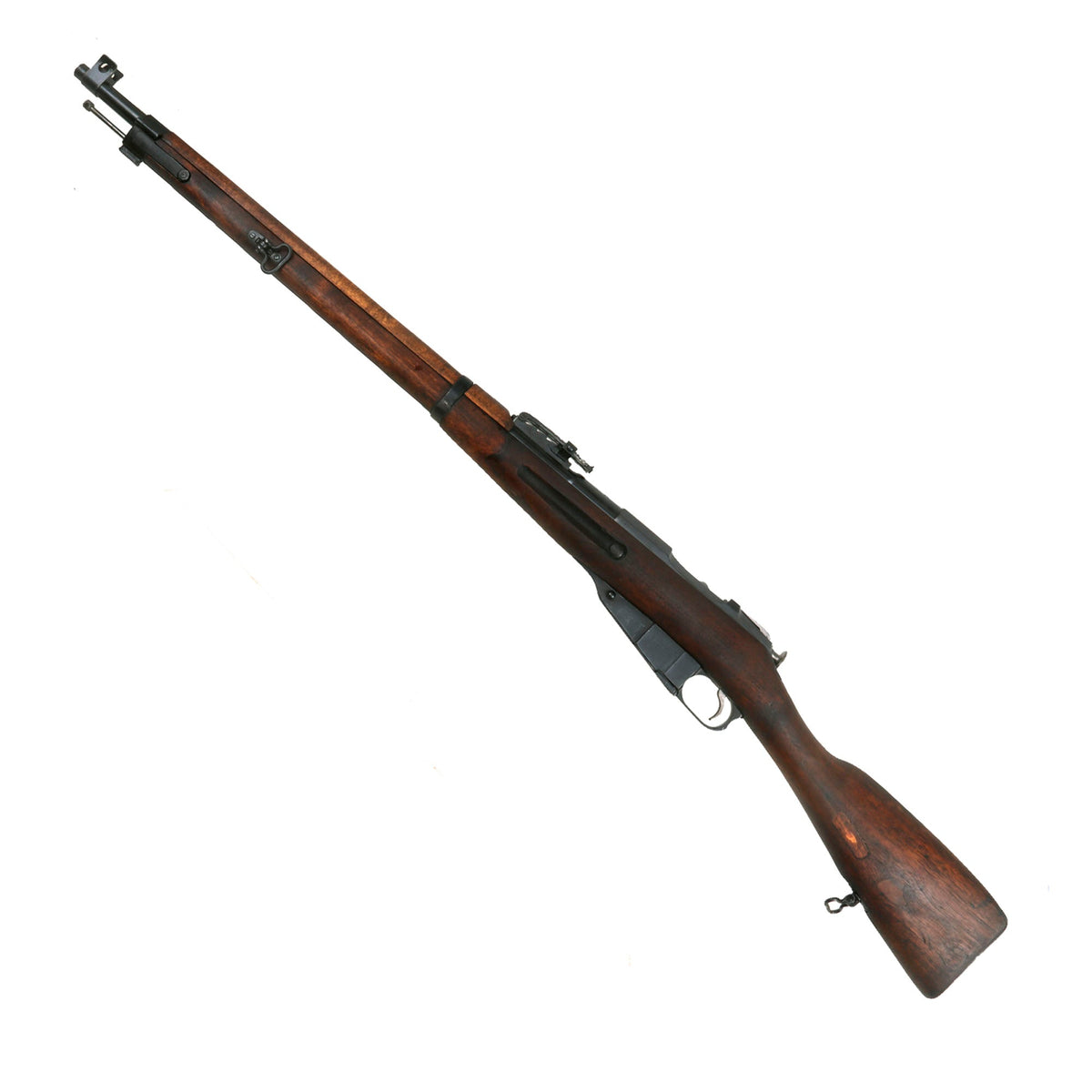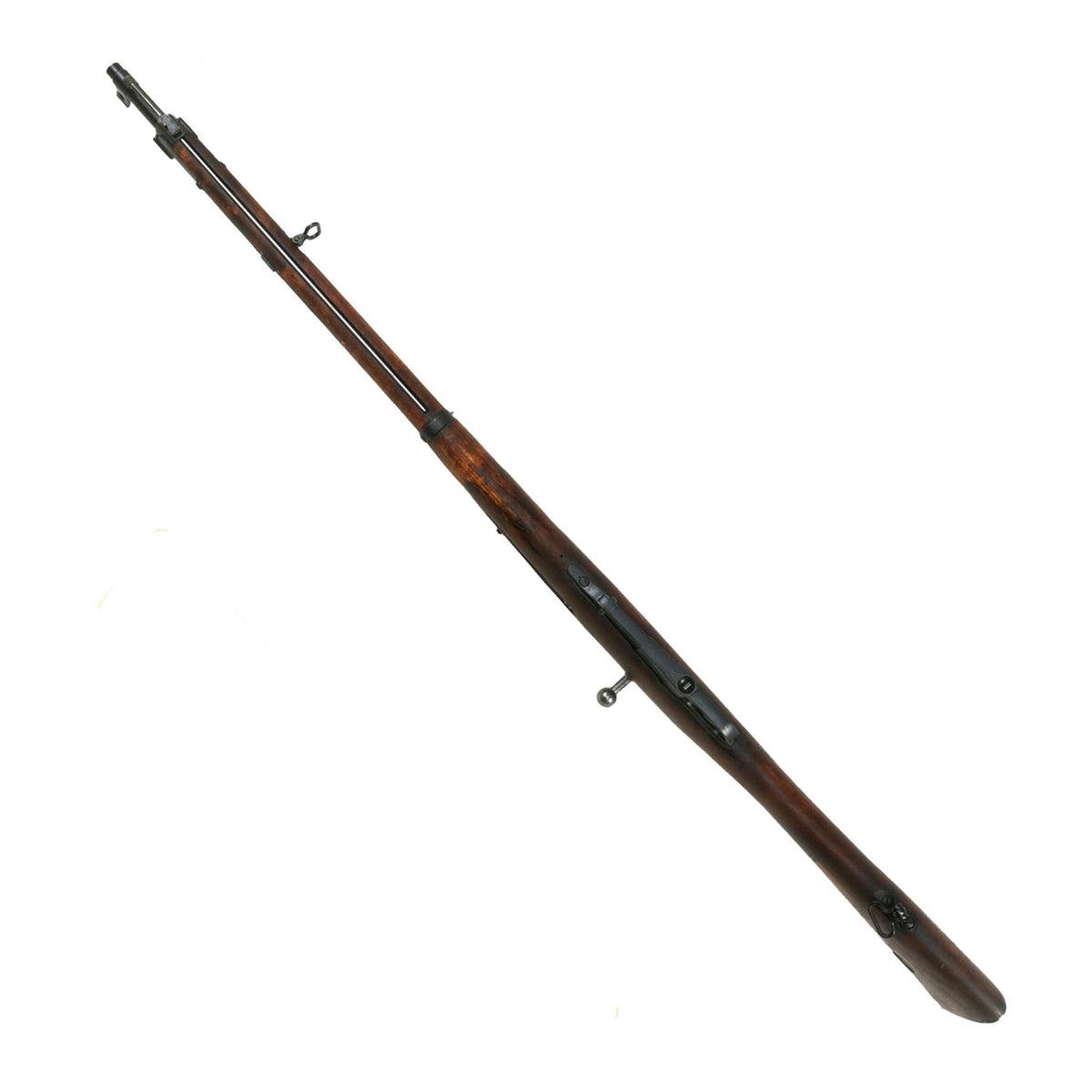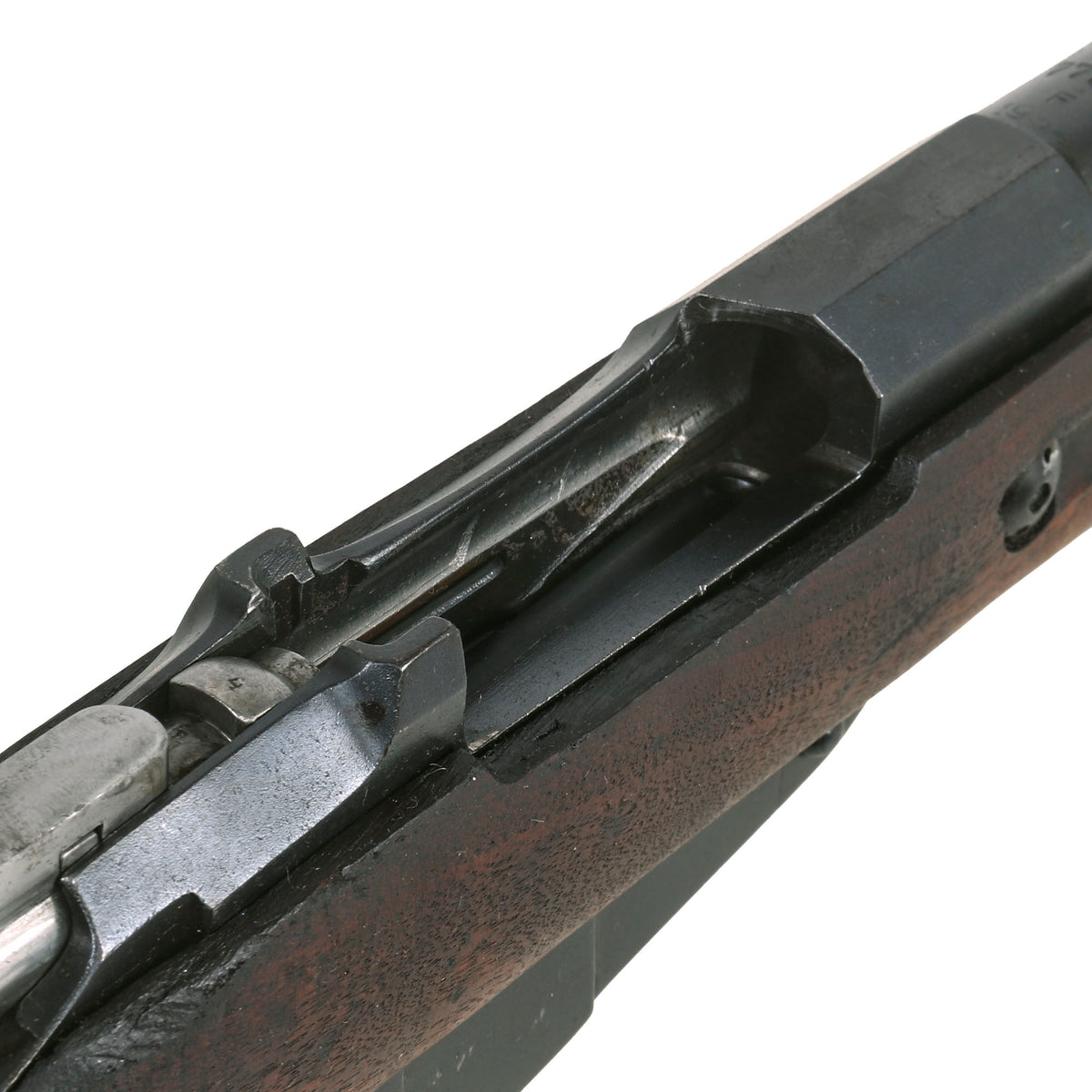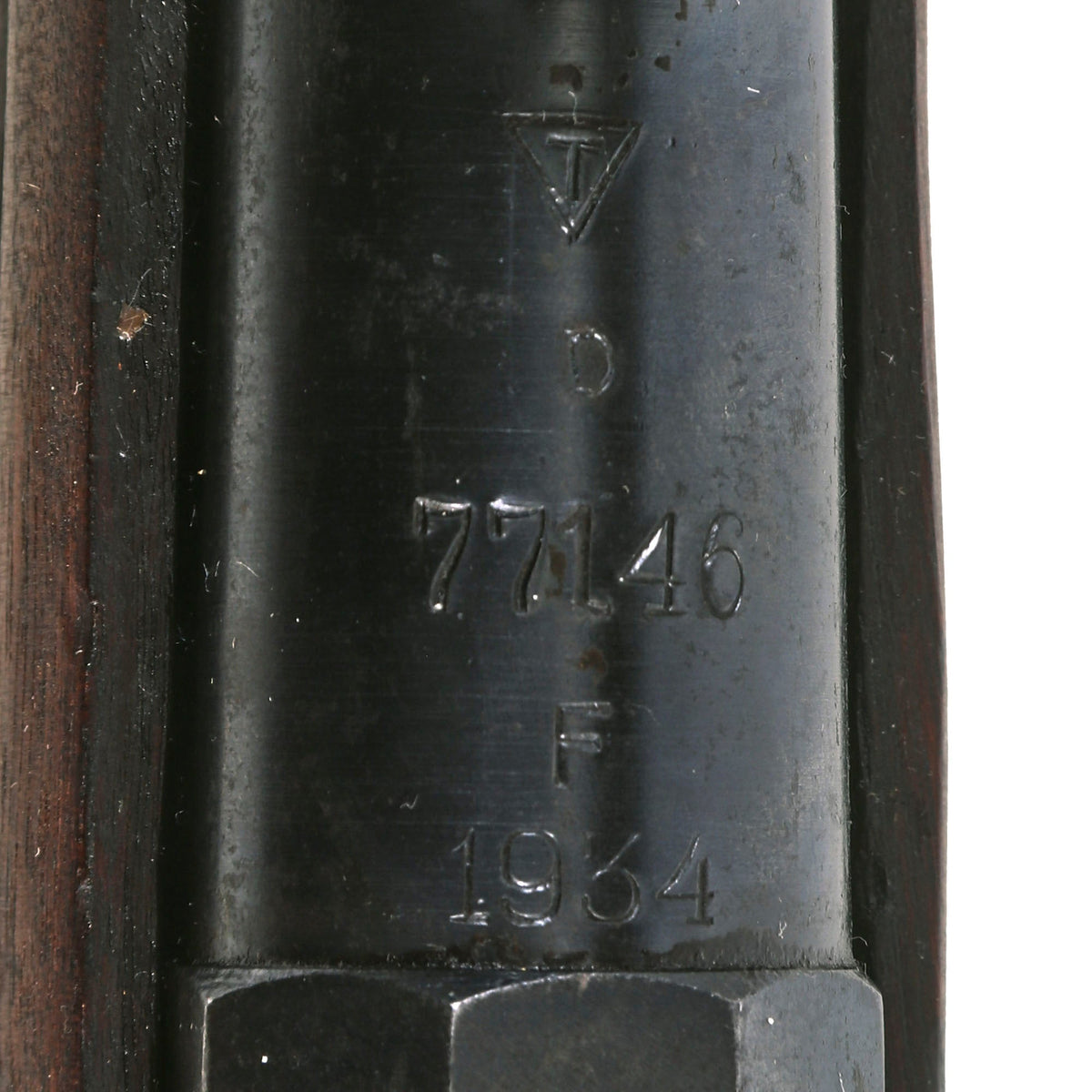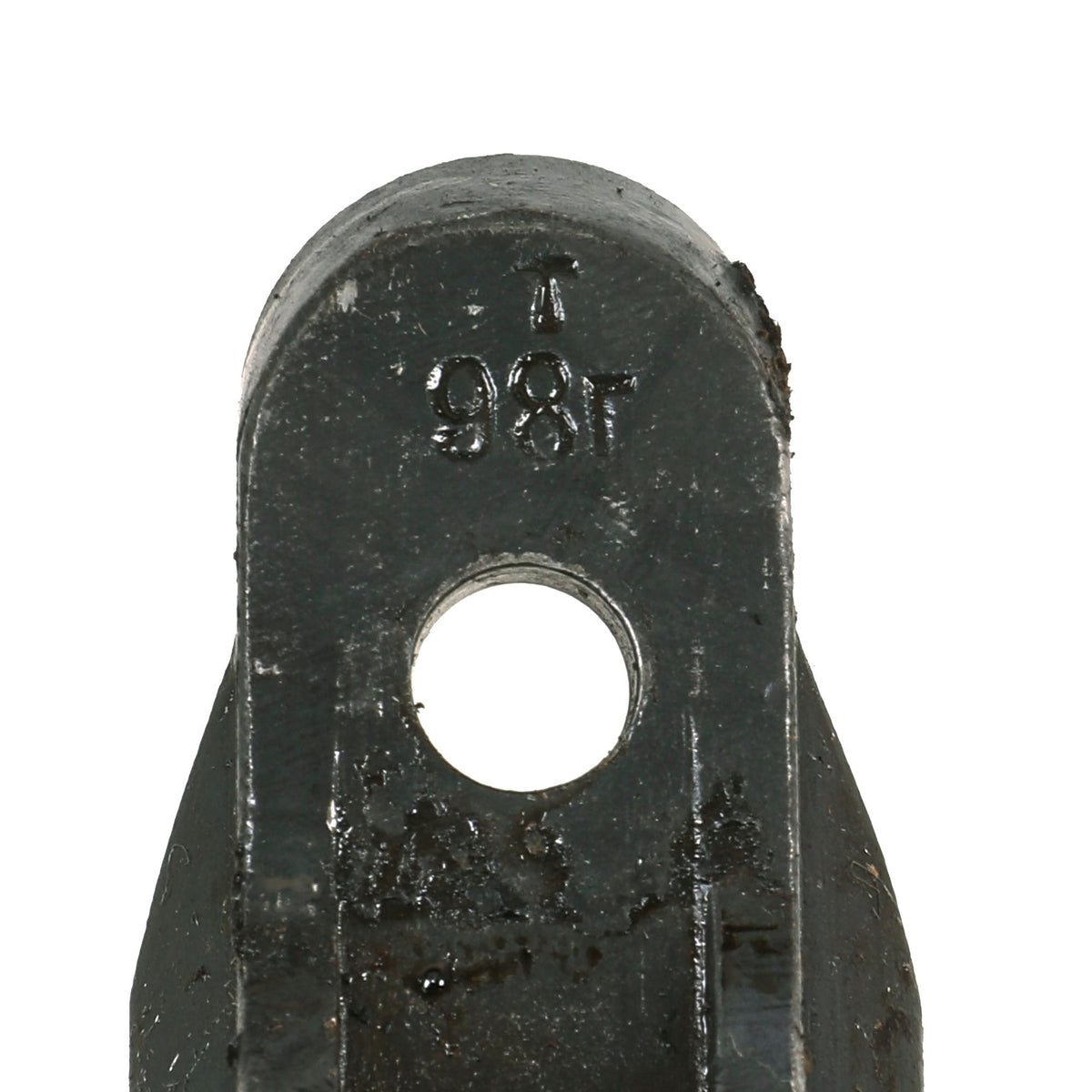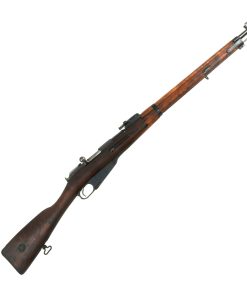Original Antique Finnish Winter War Model M/27 Mosin-Nagant Rifle Serial 77146 with Ski Swivel & Tikkakoski Barrel – Receiver Dated 1898 Original Items
$ 2.295,00 $ 573,75
Original Item: Only One Available. These are so very rare, a real pre-1899 Antique Russian Mosin-Nagant Rifle, originally referred to as the “Three Line Infantry Rifle, Model of 1891.” This example was almost certainly one of 190,000 or so Mosin-Nagant M1891 Full Length Rifles left behind in Imperial Russian depots when the country gained its independence in 1917-1918. The rifle was quickly adopted as the standard weapon of the fledgling country, and quickly the need arose to overhaul these to meet Finnish Army standards. This resulted in the first of many upgraded Finnish Mosin-Nagant rifles, the M/91. Due to the large number of rifles already present, until close to the WWII era all Finnish Mosin-Nagant rifles were built on the original Russian receivers.
The Model 27 was the Finnish Army’s first almost complete reworking of the Model 1891, it was nicknamed Pystykorva (“spitz”) for the front sight protector’s resemblance to the upright ears of a spitz dog. The receiver and magazine of the 1891 were retained, but a new shorter-length heavy-weight barrel was fitted. The sights were modified. The receivers and bolts were modified with “wings” being fitted to the bolt connecting bars that fit into slots machined into the receivers. The stocks were initially produced by cutting down 1891 stocks and opening up the barrel channels to accommodate the heavier barrel. New barrel bands and nose caps were fitted and a new bayonet was issued.
The modified stocks proved to be weak, breaking when soldiers practiced bayonet fighting or firing with the bayonet fitted. These and other problems resulted in a slow-down of production in the mid-1930s while solutions to problems were engineered and existing stocks of rifles were modified, resulting in the “finger joint” stock seen on this example. Produced from mid-1927 to 1940, the Model 27 was the Finnish Army’s main battle rifle in the Winter War.
This is a very nice example of the Finnish M/27 Mosin-Nagant, fitted with a Finnish barrel dated 1934 next to the receiver. Next to the sight, is is marked with the “T” in a Triangle inside a Circle marking of Oy Tikkakoski Ab, or “Tika”, a manufacturer of sewing machines that was purchased by a German arms dealer Willi Daugs in 1930. It then began manufacturing arms, and this is the marking seem on M91 rifle barrels produced during 1930s and 40s. Below the maker mark is the serial number 77146, while the bottom of the barrel under the stock is marked 11235. The right side of the barrel by the front sight has some caliber markings, required for importation.
The receiver marking is not visible unless it is removed from the stock, which we have done to be sure that this is indeed an antique. The rear underside of the receiver tang is marked 98г (г is short for год “god”, or year in English) under the “Hammer” logo of Tula. Reconstructed in the 19th century, Tula Arms Factory became one of the most prominent arms factories in Europe. In 1879 the plant started production of the famous Berdan rifle with an improved bolt. Workshop was organized by a model where created their own models of small arms and hunting weapons. Increased production of various products: single- and double-barrel muzzle-loading shotguns, breech-loading center-fire rifles. Designer Sergei Ivanovich Mosin took part in devising damascus steel technology used in production of barrels. He also designed a bolt-action rifle which was put to testing along with a rifle developed by Émile Nagant. In 1891, as a result of complex tests Mosin’s entry was chosen over the Belgian design and it was adopted by the Imperial Russian Army as the three-line rifle of 1891.
The rear sight is an adapted Russian M91 sight, using the base and leaf assembly with modifications. The base has an extra notch cut at the rear for a total of 6 which are numbered 2, 3, 4, 5, 6, and 8, representing hundreds of meters on both sides of the base. The notch is in a V shape which is a separate piece screwed to the rear of the leaf. The original Russian marks up to 3200 арши́ны (arshíny) remain on the rear of the blade. The slide itself has “ears” which project down on each side of the base to help prevent damage to the leaf it is struck from the side. The bolt is actually marked with the Bow and Arrow proof of Izhevsk arsenal, showing that the Finnish did not replace any parts that were still serviceable. The magazine however is marked with the “Hammer” logo of Tula arsenal, another Czarist marking which was discontinued following the Russian revolution and subsequent civil war.
The stock on the rifle is the correct Finnish two part design, with a finger joint under the rear sight area, and has the cross bolt to reinforce against recoil. It features a late pattern nose cap with a hinged top band and “fingers” that extend into the stock, which were an attempt to keep the bayonet from tearing off the nose cap. The stock is fitted with a rotating sling swivel on the bottom of the butt stock, and the slot on the fore stock has a “ski swivel” that attaches to the left side of a metal fitting that goes through the fore stock sling slot. This would indicate probably use by Finnish Army Ski troopers. There is also a plugged slot on the butt stock from when it was adapted.
Condition of the rifle is very good, especially considering the age and amount of service it must have seen. The stock is in very good condition, showing light to moderate wear from service, with some small dents and chips, but no cracks or repairs we can see. The metalwork is in great shape, showing a dark blued finish overall. It still retains the original cleaning rod, which is in good shape, and is easily removed. The rifle cycles well, with a crisp dry fire. The bore is in very good condition, showing a mostly bright finish with clear lands and grooves. There is a bit of rounding on the lands and some light oxidation in the grooves, so the rifle did see some level of service after rebarreling.
A wonderful piece of Finnish and Firearms history! Ready to research and display!
Specifications:
Year of Manufacture: 1898
Caliber: 7.62×53mmR Finnish
Cartridge Type: Centerfire Cartridge
Length (overall): 46 3/4″ (118.7 cm)
Barrel Length: 27″ (68.6 cm)
Stock length: 43 1/4″ (109.9 cm)
Action type: Bolt Action
Feed System: 5 Round Internal
During the Winter War of 1939/1940, Finland heroically fought the forces of the Soviet Union in a David-versus-Goliath struggle that lasted about 100 days. Though the Finns eventually lost about 11 percent of their territory to the Soviet Union, they inflicted 323,000 casualties on the Soviets while suffering only 70,000 casualties themselves. Of course, for a small country that was a lot of casualties. As a result of Finland’s tenacity and courage during the Winter War, the reputation of the Finns around the world was enhanced, while the Soviet’s poor performance in combat may have contributed to AH’s decision to invade the Soviet Union less than a year and a half later.
Finland’s greatest asset during the Winter War was a large cadre of citizen soldiers who combined their skills as skiers, woodsmen and riflemen to ambush and carry out hit-and-run attacks on the Soviets. The principal weapons for the Finnish raiders were the Suomi submachine gun and the Finnish versions of the Mosin-Nagant rifle, chambered for the Finnish 7.62x53R round, which is virtually identical to the Russian 7.62x54R round used in their version of the Mosin-Nagant.
Originally, Finland had a large number of Soviet Mosin-Nagant M/91 rifles, which were in military arms depots when they achieved their independence from Russia in December 1917. Within a few years, however, the Finns would begin producing Mosin-Nagant rifles at SAKO, Tikka and Valmet, three arms producers that remain famous today for high-quality rifles.
The first large-scale upgrade of Finnish Mosin-Nagant rifles was the M/24 rifle for the Finnish Civil Guard. The Finnish Civil Guard (the Suojeluskunta) fulfilled a function similar to the U.S. National Guard. It was composed of volunteers, many of whom were outdoorsmen, hunters and shooters. They were separate from the Finnish Army, which was composed primarily of conscripts. Civil Guard members trained frequently and realistically. So much stress was put on marksmanship that the Civil Guard actually owned the Sako gun works. Most who have studied the Winter War believe that the Civil Guard was the most important element early in the conflict to slow the Russian advance. Their M/24 rifles used German barrels from Venus Arms, or barrels purchased from SIG in Switzerland. These rifles are often referred to as the “Lotta Rifle” after Lotta Svard, the women’s auxiliary of the Civil Guard, which helped raise the money for the rifle upgrades.
Next, the Finns reworked the M1891 Mosin-Nagant by retaining the receiver and magazine, but using a shorter, heavier barrel, improved sights, an improved bolt and new barrel bands, among other changes. After problems arose with the stock breaking when using the bayonet, the stocks were also modified. An interesting point is that many Finn soldiers didn’t like the bayonet, but preferred to use their traditional puukko knives for close combat. The current bayonet for the Valmet M/76 rifle is actually a knife bayonet of traditional style. A shortened cavalry version, the M/27rv, was also produced in limited numbers. Very similar to the M/27 was the M/28, which had a different barrel band and improved trigger. Initially, M/28 barrels were purchased from SIG, but later they were produced by Tikka and SAKO. All of the rifles, however, were assembled at SAKO. The major criticism of the M/28 was that it retained the Russian “Konovalov” rear sight, which Finnish troops did not like. This is one of the primary reasons for the development of the M/28-30.
Fast Shipping with Professional Packaging
Thanks to our longstanding association with UPS FedEx DHL, and other major international carriers, we are able to provide a range of shipping options. Our warehouse staff is expertly trained and will wrap your products according to our exact and precise specifications. Prior to shipping, your goods will be thoroughly examined and securely secured. We ship to thousands clients each day across multiple countries. This shows how we're dedicated to be the largest retailer on the internet. Warehouses and distribution centres can be located throughout Europe as well as the USA.
Note: Orders with more than one item will be assigned a processing date depending on the item.
Before shipping before shipping, we'll conduct a thorough inspection of the items you have ordered. Today, the majority of orders will be delivered within 48 hours. The delivery time will be between 3-7 days.
Returns
The stock is dynamic and we cannot completely manage it because multiple stakeholders are involved, including our factory and warehouse. So the actual stock may alter at any time. It's possible that you may not receive your order once the order has been made.
Our policy is valid for a period of 30 days. If you don't receive the product within 30 days, we are not able to issue a refund or an exchange.
You can only return an item if it is unused and in the same state as the day you received it. You must have the item in its original packaging.
Related products
Uncategorized
Uncategorized
Uncategorized
Uncategorized
Uncategorized
Uncategorized
Uncategorized
Uncategorized
Uncategorized
Band of Brothers ORIGINAL GERMAN WWII Le. F.H. 18 10.5cm ARTILLERY PIECE Original Items
Uncategorized
Uncategorized
Uncategorized
Uncategorized
Uncategorized
Armored Burgonet Helmet & Polearm from Scottish Castle Leith Hall Circa 1700 Original Items
Uncategorized
Armoured Fighting Vehicles of the World: AFVs of World War One (Hardcover Book) New Made Items
Uncategorized
Australian WWII Owen MK1 Machine Carbine SMG Custom Fabricated Replica with Sling Original Items
Uncategorized

